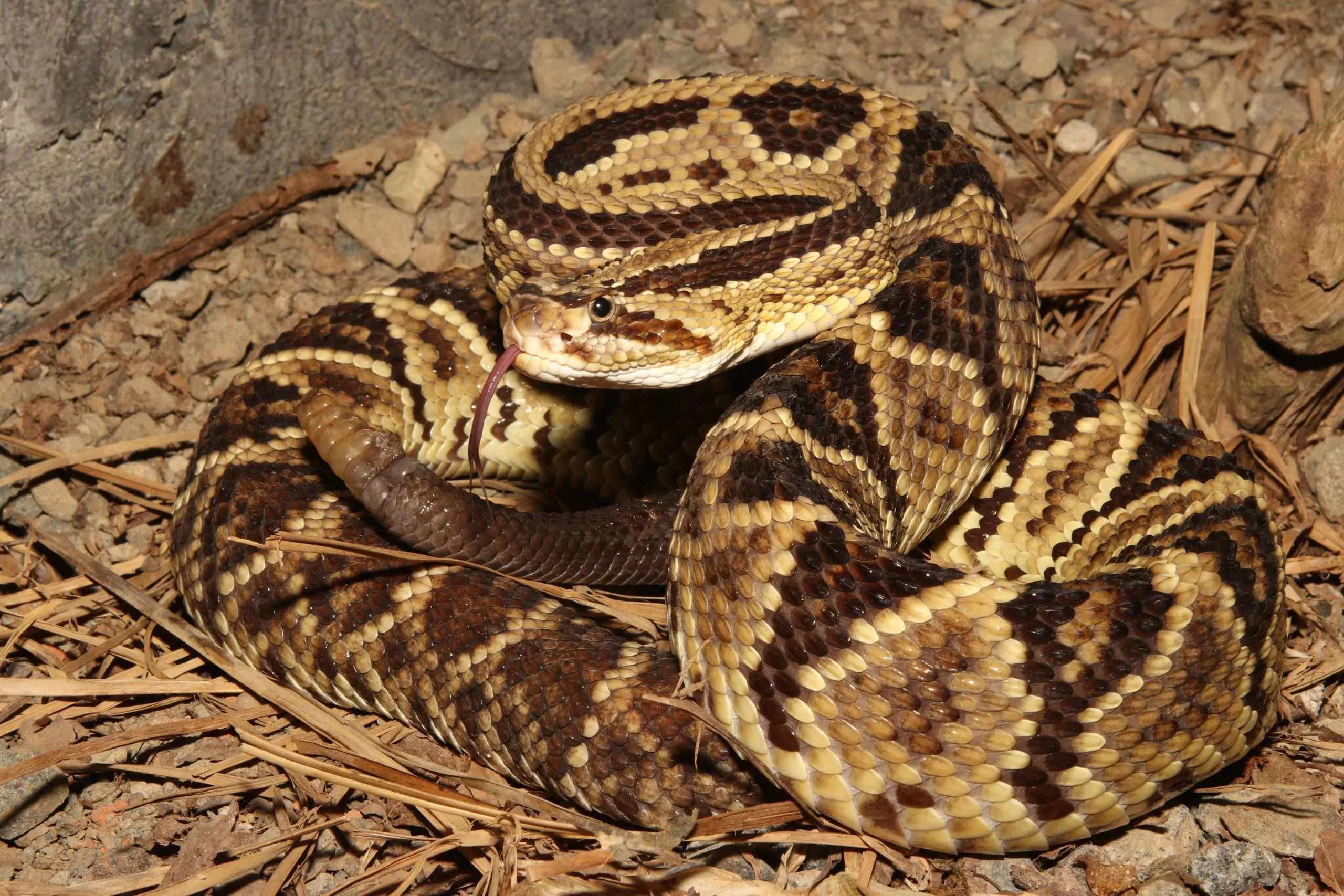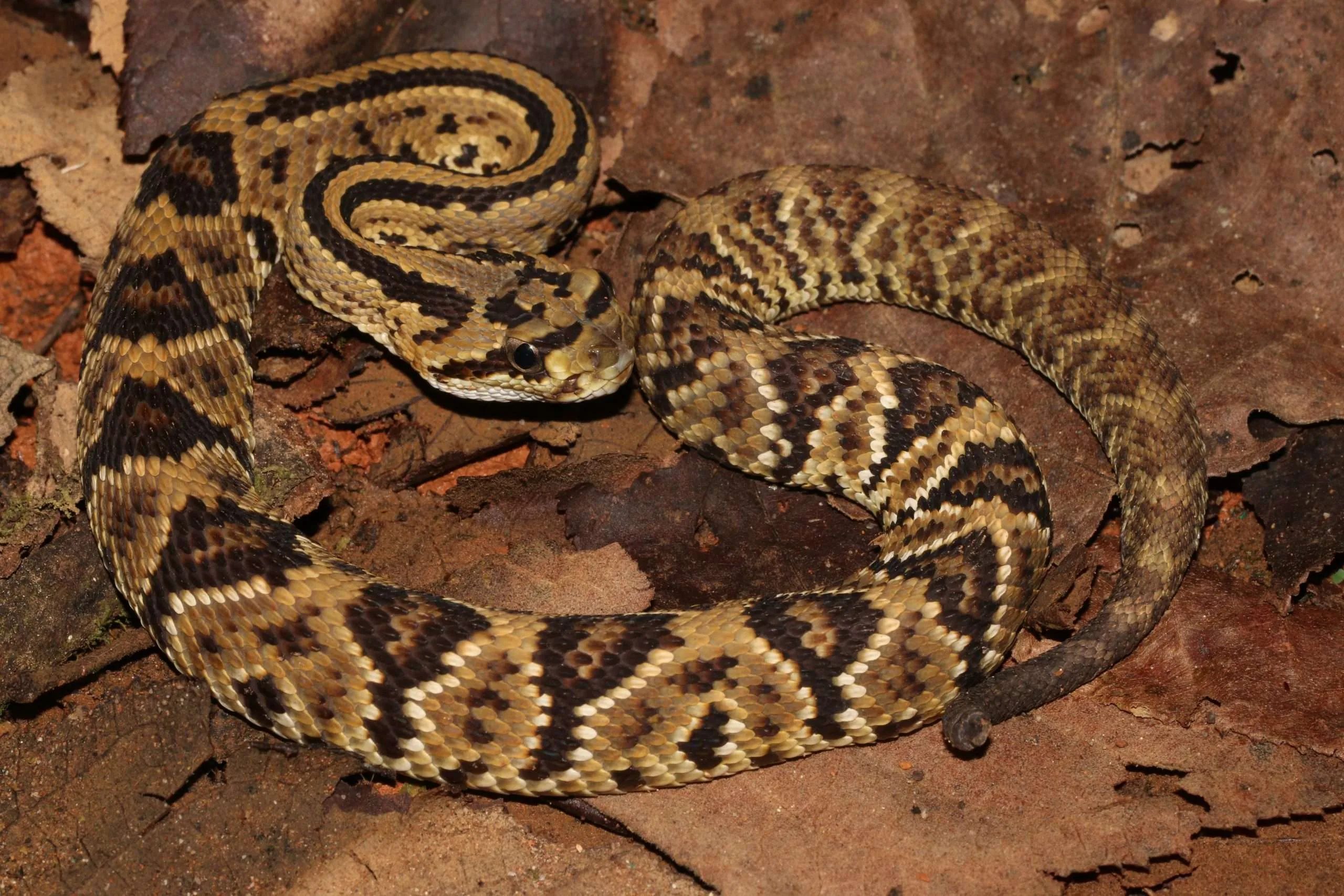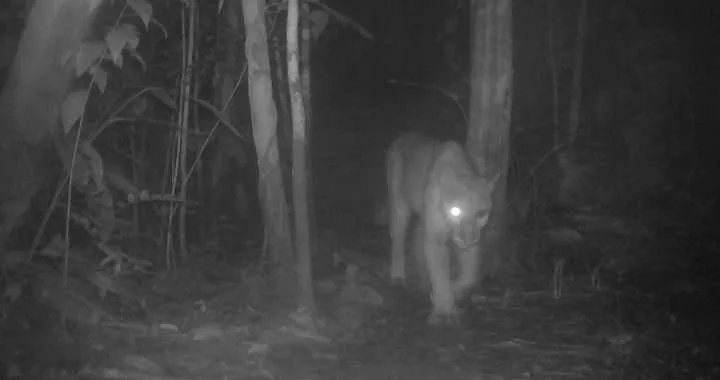
Jingle bells of the Snake World – the Neotropical Rattlesnakes
Author: Roel de Plecker
Tropical Rattlesnakes, does this word ring a bell to you? I think everyone has heard of them or seen them on television, stealing the show in cowboy movies or nature documentaries. Famous for their rattling tail tip, actually modified scales, being a series of hollow interlocking segments made out of keratin (the same substance as your fingernails.) Specialized muscles in the snakes’ tail shake the rattle at a very high frequency, thereby producing the unmistakable sound. One of several hypotheses for these pitvipers’ rattle’s origin is that it evolved as an aposematic warning for predators that the snake is venomous. Another assumption is that the rattling tail distracts predators from attacking the more vulnerable head of the animal. Defensive tail vibration is quite common in venomous and non-venomous snakes. Examples are bushmasters, lancehead pitvipers, tiger rat snakes, etc. Also, it can be that the snakes lure their prey with their tail. This ‘caudal luring’ has been observed in several other species of snakes. There is the popular misbelieve that you can determine the age of the snake by counting these segments. However, every time the snake shed’s its skin, a new segment is added. Snakes shed several times a year, they grow out of their old skin, and they grow faster when they are young. The baby rattlesnakes get born with just a single button, and every time they shed, they get one extra. Also sometimes rattles do break off when getting too large. |

Several species of rattlesnakes are found from North America, throughout Central America (with Mexico having the most species), and all the way down through South America to Northern Argentina. These neotropical snakes live in a wide variety of habitats throughout their range, from deserts at sea level to alpine cloud forests up to 4.000 meters of elevation. All rattlesnake species are pitvipers; they are venomous and give birth to live young. Like all venomous snakes, they get born with fangs and venom glands, natural born killers. In Costa Rica, only one species of rattlesnake can be found, being the Neotropical rattlesnake or Crotalus simus. It occurs in the drier regions of the country, being Guanacaste and Nicoya’s dry forests. The Neotropical rattlesnake can grow to 1.8 meters, with males being bigger than females. Ritual combat between males has been observed. In this combat, no fangs nor venom are used, but the males raise their heads high and start wrestling with each other, the strongest one trying to push its opponent to the ground. After a while, the loser of the fight slitters away, while the stronger male will mate the female that has been observing the show. Neotropical rattlesnakes are mostly nocturnal and terrestrial, however, you can see them, as well, on lower tree branches. They feed primarily on small mammals. These rattlesnakes are absent from our Southern Pacific coast, but you can see them at Parque Reptilandia. |

Busting Myths About Costa Rica Destination, Free Costa Rica Magazine #99
We’ve recently seen misinformation circulating suggesting that Costa Rica is an expensive destination.

Debunking myths about Costa Rica’s South Pacific destination
There is false information circulating that suggests the South Pacific Costa Rica is an expensive destination

Beach Clean Up in Uvita: Community Spirit in Action at Marino Ballena National Park
Beach Clean Up in Uvita Community Spirit in Action at Marino Ballena National Park Author: Sophie Schindler

Costa Rica’s First 100% Gluten-Free Gourmet Restaurant
Costa Rica’s First 100% Gluten-Free Gourmet Restaurant La Palapa Restaurant: Indulgence Without Compromise Travelers come to Costa Rica seeking nature, adventure – and memorable dining. At Cuna del Ángel, a boutique hotel nestled in the […]

Adventure Begins Where Comfort Ends: Our Rain-Soaked Snorkeling Tour to Caño Island
What I Learned from Traveling in the Rain or Why a Plastic Cape Can Teach Humility Our Snorkeling Tour to Caño Island

Increasing Biodiversity in the Path of the Tapir Biological Corridor
The area including the Path of the Tapir Biological Corridor in Costa Rica, is one of the few places with increasing biodiversity.

Costa Rica: a destination for all budgets, Free Travel Guide #98
In this free travel guide we also address recent online misinformation suggesting that our destination is expensive for visitors.

Discovering Dominicalito: A Tranquil Coastal Gem in Costa Rica
Located along Costa Rica’s Central Pacific coast, Dominicalito is a peaceful retreat just south of the bustling surf town of Dominical
What to do, Where to eat and Where to stay…
- Activities and Tours
- Whale Watching Tour
- Natural Attractions
- Marino Ballena National Park
- Restaurants
- Hotels and Accommodations
South Pacific Costa Rica Beaches,
Looking for business directories, maps or other printouts? We’ve got that too!
Dare to Discover and Enjoy…
Check out…
Need help planning your next trip? Let us help you with your Costa Rica vacations!
Email: carlos@ballenatales.com
Phone: +(506) 8946 7134 or +(506) 8914 1568
Skype: ballenatalestravel



